Go Touch Grass (Literally!)
Preparing for warmer days with Che Lovelace's new exhibition "Where the I Settles" at Nicola Vassell
At the start of this month, Nicola Vassell presented Che Lovelace’s second solo exhibition at the gallery, Where the I Settles. It was a tight show consisting of eight paintings that featured the landscape and people of his home, Trinidad and Tobago. I attended his first show back in 2023 with friends. We were all enthralled by the romanticism of his work, which left us yearning for a tropical childhood we missed out on. Needless to say, I was excited to see this series of new works, and I was not disappointed.
The word of the opening night was nostalgia. I spoke to a few attendees that evening, all from the Caribbean. Each expressed sentiments of pride and nostalgia at seeing the home they knew intimately represented so lovingly and accurately. Some attendees I spoke to were from Jamaica and others from Trinidad. Each conversation returned to Composition with Decorated Stone Wall, Hills and Houses, 2025, which showed a staggering pile of colorful houses that triggered memories of the town where they grew up. People stopped to speak to Lovelace to thank him for bringing the colors and warmth of the tropics to the rigid industrial architecture of Chelsea.
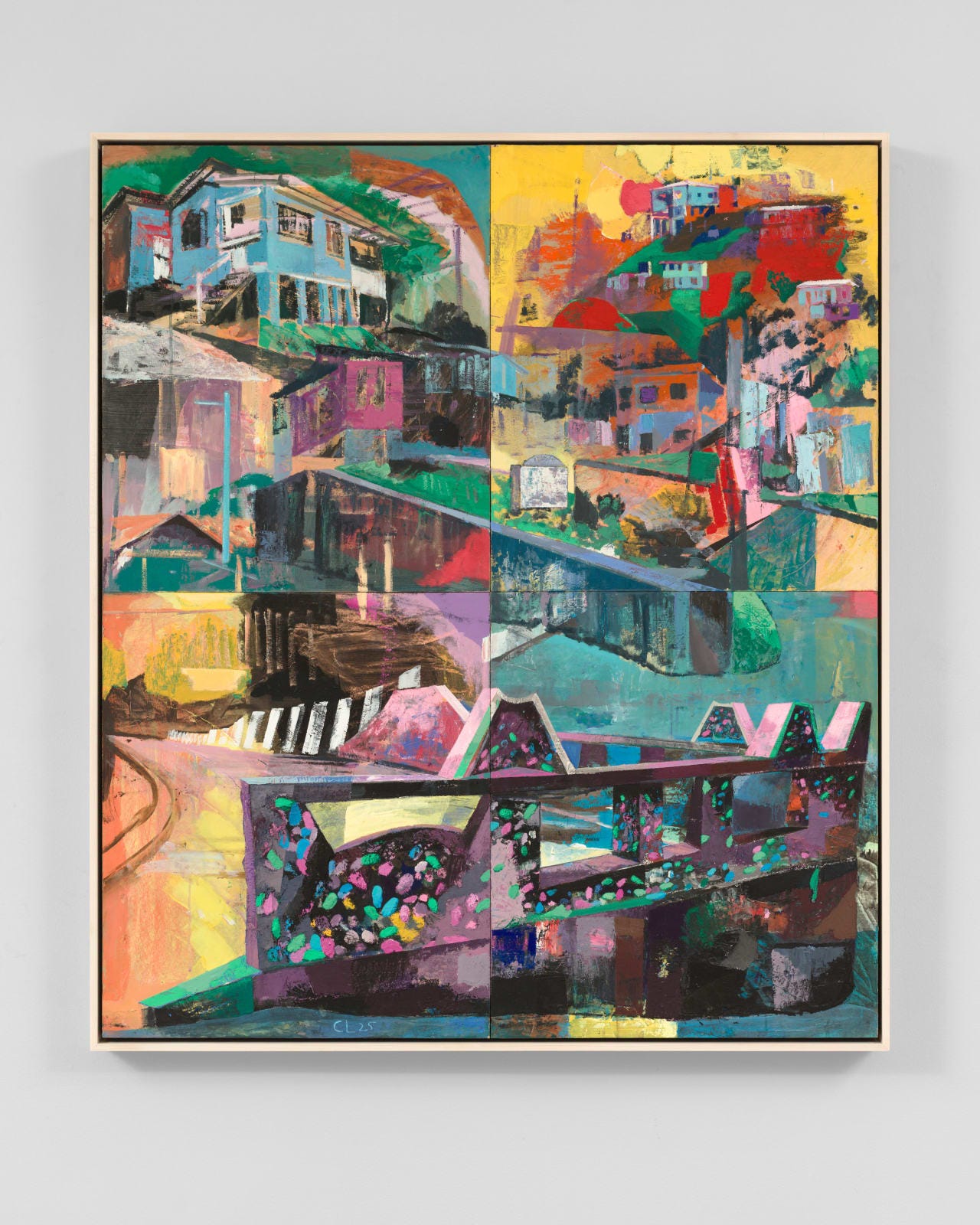
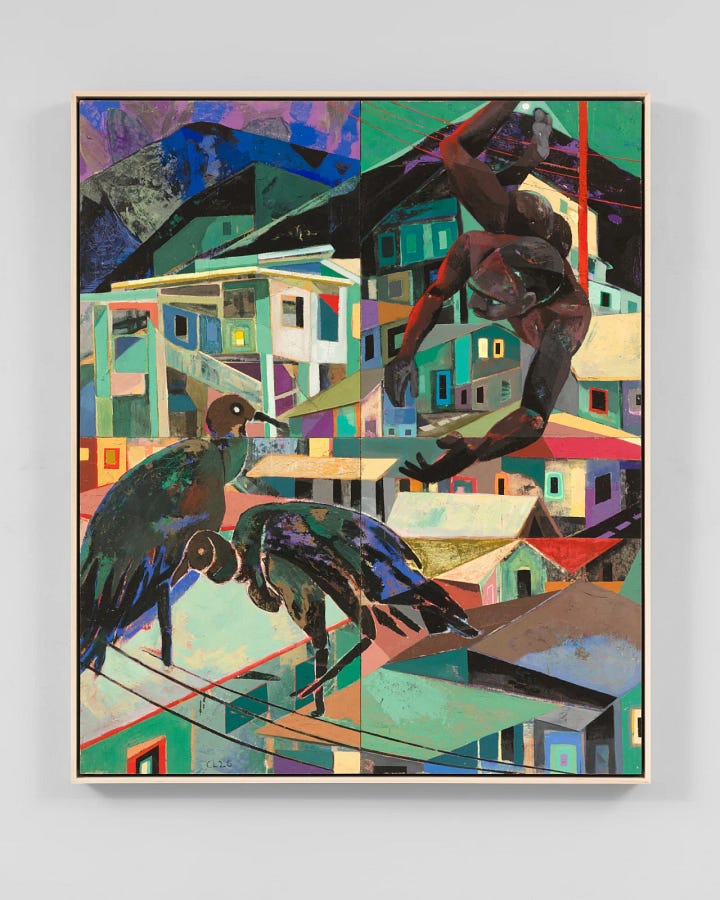
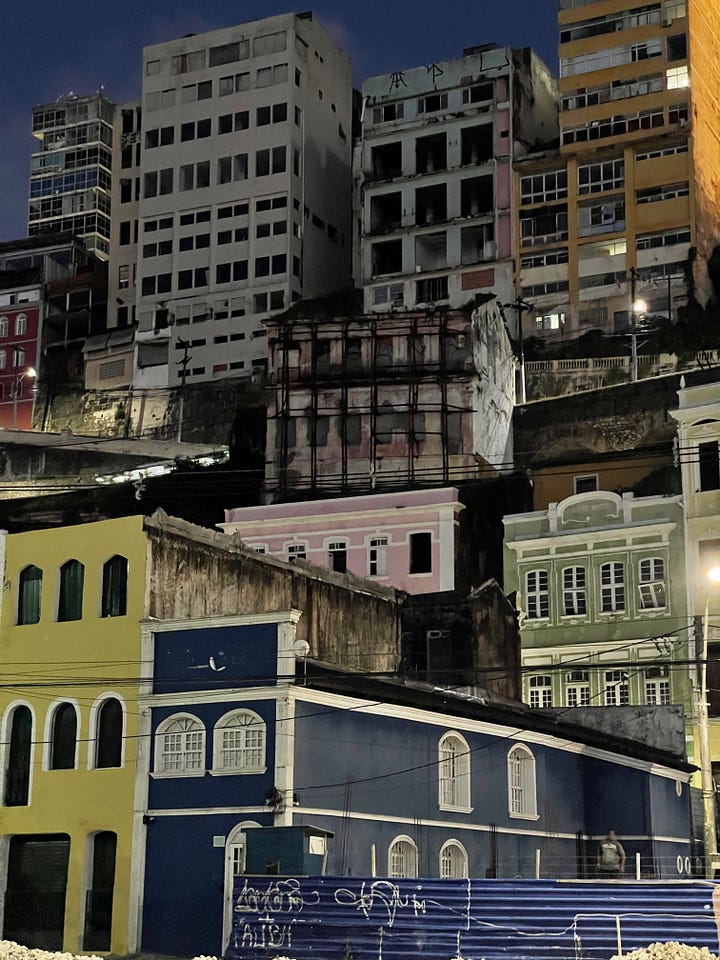
I am not Caribbean and have yet to visit. Still, Composition with Decorated Stone Wall, Hills and Houses brought me back to the shorelines of Salvador, Bahia. Along the Atlantic coast, skittles-colored homes stacked atop one another house memories of different groups of the Black diaspora. It is quite touching that a similar visual language is threaded through our idea of home that ultimately tugged us all together to this Black-owned gallery in Chelsea.
Lovelace manages to put so many elements onto one canvas. His maximalist, occasionally cubist approach takes different fragments of the social and natural environs of Trinidad and Tobago to create a harmonious scene. Some of his work comprises separate panels, each with a distinct color palette. Head Above Water, 2025, captures an aquatic respite. In one frame, Lovelace shows the swimmer above and below the water line, the sea’s surface, and the shoreline with mountains stretched across the land. Many elements of the natural plentitude and serenity the island has to offer are appreciated in a single snapshot.
My favorite painting, Bush Night Poem, 2025, demonstrates his most complex use of this technique. What exactly I am looking at is indecipherable. Still, the abundant beauty of Trinidad and Tobago’s flora is wonderfully translated. It is the spindly leaves of palm trees. It is the lazy outstretched stem of flat, waxy leaves. It is the dense foliage that prevents the eye from peeking beyond the foreground. It is a flower. It is a bird. I mean, it could be a bird. It is the iridescent flitting wings of noctivagant insects. It is the blanket of blue-black that enfolds the island. Lovelace plentifully illustrated the verdure of Trinidad, making it plain why the island is so beloved.
Lovelace's style of blending people and nature in his work betters my understanding of people’s role in the natural order. His unitary approach to depicting Trinidad and Tobago dissolves the boundary between people and place, arousing a primeval reminder that people embody their environment. Just as the greenery and architecture shown are of the land, the figures also express the essence of their environment.

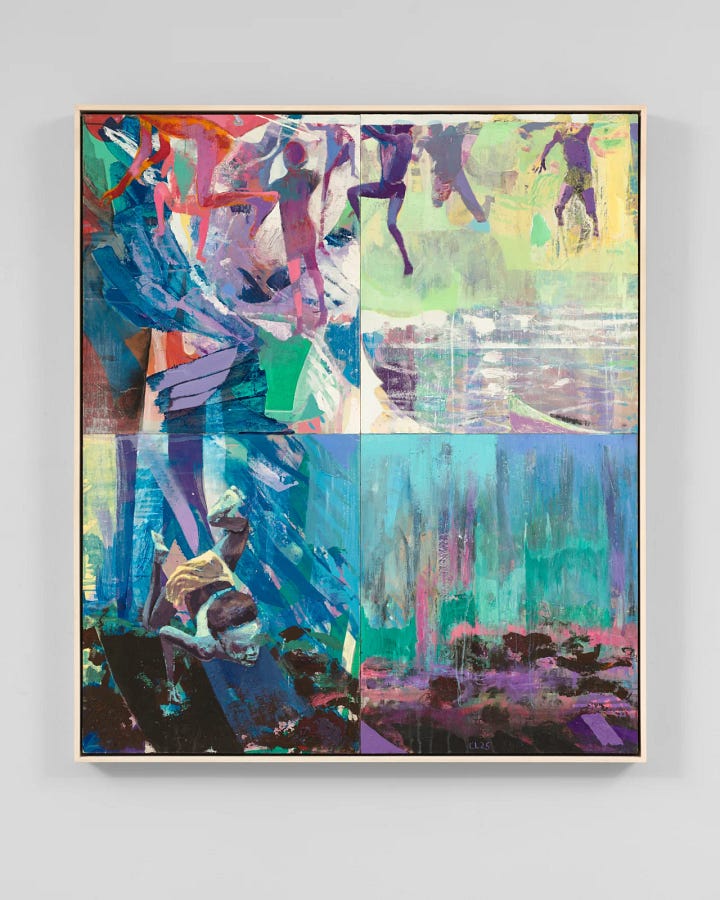
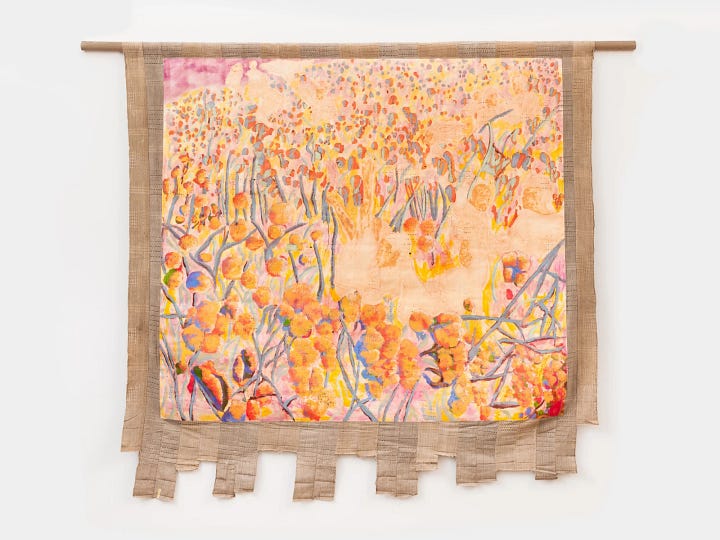
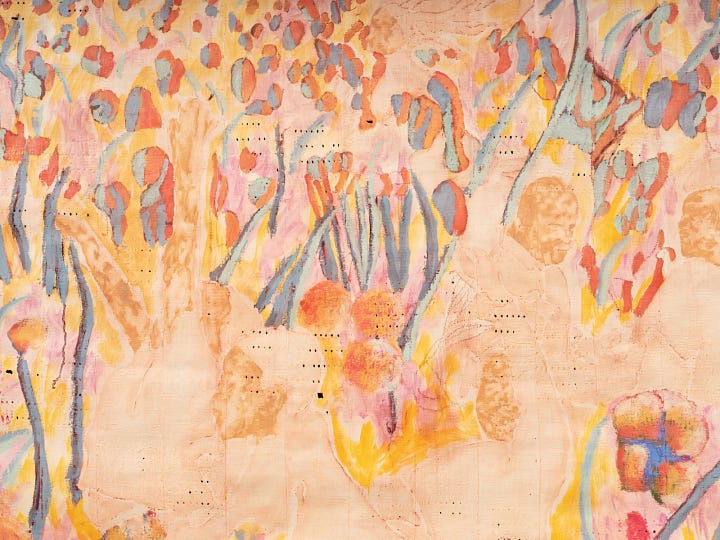
This perspective towards land and people reminds me much of the practice of Nengi Omuku, a British-Nigerian artist who debuted at Kasmin Gallery last fall. Lovelace and Omuku’s works are similar not in technique or style, but in affect. Both their use in abstracted figures in lush terrain evokes a similar sense of nostalgia for me. The worlds they create feel so alive with these dreamy, Eden-like landscapes. It beckons me to step into a memory I do not recall experiencing. Omuku’s Orange Bougainvillea, 2024, features spectral, delicately painted figures amidst a field of tall grass and flowers. The people are enmeshed with the foliage. Only through closer inspection do they reveal themselves. Likewise, Lovelace’s works are littered with faceless figures who are defined by their environment, as seen with Surfer Seen from Inside a Wave, 2025 and Swimmers at the Surface and One Young Diver, 2025. I have lived in concrete cities all my life, from Lagos to New York. Yet, Lovelace and Omuku’s works elicit an innate longing to be within greenery and be of the land as if the soil spat me up like a flower breaking ground. As a lifelong city girl, I love these reminders that peel back the egotistical presumption that humans lord over the Earth. Rather, we are simply its inhabitants like any other natural matter.
With spring opening the city back up, Where the I Settles is a beautiful start to the season. Lovelace brilliantly imported some of Trinidad and Tobago’s warmth and vibrance to our thawing city. The exhibition will be open until July 25th. It is time well spent to consider what it can look like for us to be better unified with our environment.




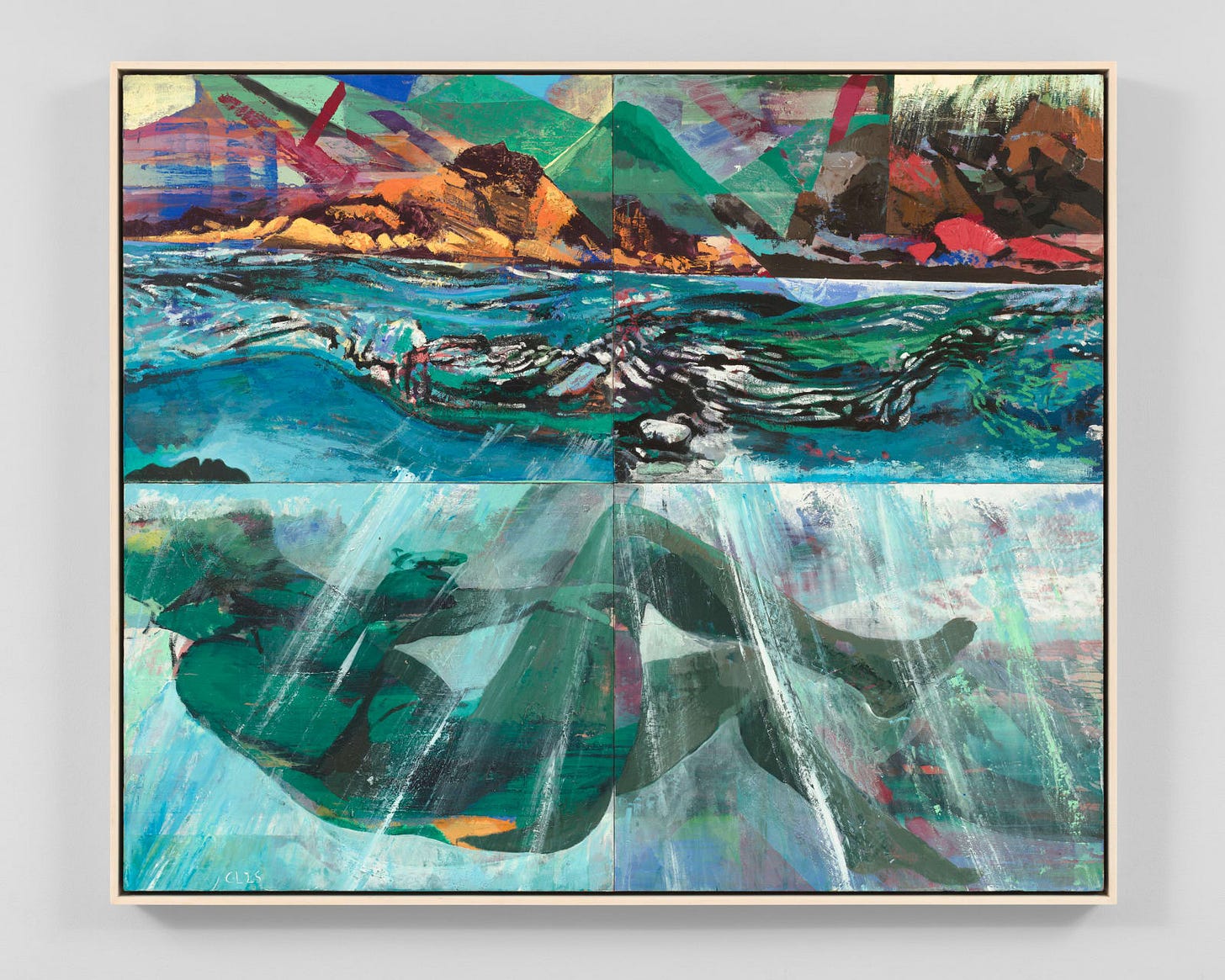
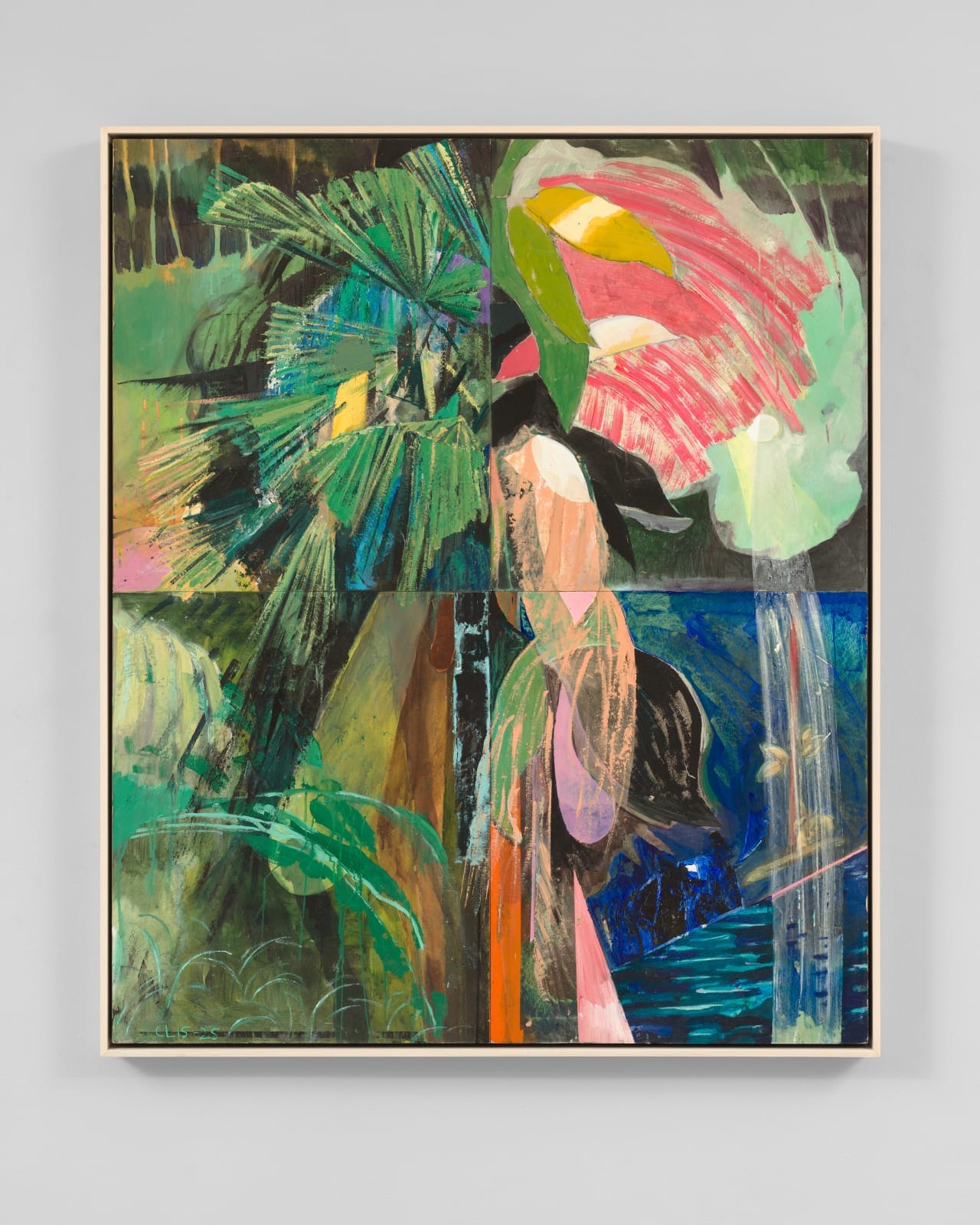
Thank you for introducing me to Che Lovelace. He is a phenomenal talent. Looking forward to expanding my repertoire of artists through you!